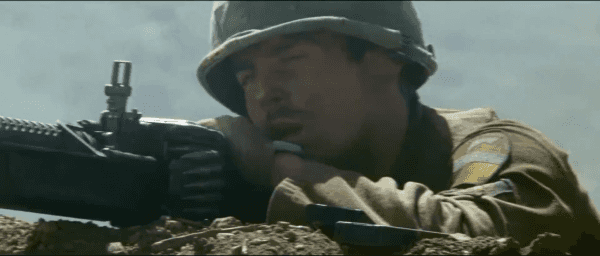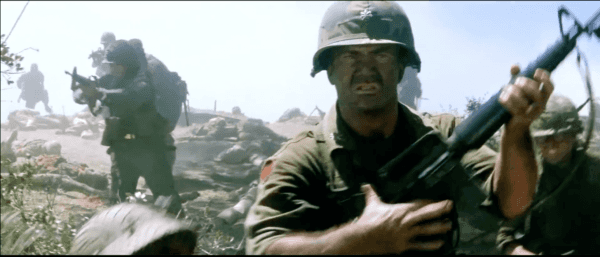“We Were Soldiers,” Randall Wallace’s 2002 war epic starring Mel Gibson, is an action-packed film that offers audiences a glimpse at one of the most trying times in American history. Centered around the Vietnam War, the movie focuses on the first major battle between the United States Army and the People’s Army of Vietnam.
While the film attempts to balance stunning yet equally gory visuals with history, the true events of the Battle of Ia Drang are often lost in the complexities of the controversial, decades-long war.

The final battle scene from the film We Were Soldiers starring Mel Gibson. (Breaker/YouTube)
Based on the novel “We Were Soldiers Once . . . And Young” by Hal Moore, Wallace attempted to do what very few in Hollywood accomplish when adapting a historical book to the big screen: get it right. Moore complained in the book itself that “every damn Hollywood movie got it wrong,” and Wallace was determined to succeed in offering audiences an honest film.
However, some scenes, like the final battle in the video below, are required in order to give audiences the thrilling, heart-pounding conclusion they often demand while being less than accurate.
The real Battle of Ia Drang was not a fierce, hand to hand combat struggle, but rather a series of strategic engagements that took place over two days. And rather than a quick and decisive victory, the actual battle resulted in major losses on both sides. The Americans won a tactical victory at the first landing site, but took significant losses at another.
The U.S. counted 96 killed and 121 wounded during the first engagement, and 155 killed and 124 wounded in the second. The Vietnamese saw some 1200 killed over two days before largely pulling back.

The final battle scene from the film We Were Soldiers starring Mel Gibson. (Breaker/YouTube)
One of the most accurate moments of the final scene is the invaluable use of air support. The U.S. relied heavily on air mobility, air power, and artillery while the Vietnamese specialized in close quarters fighting.
The differing combat styles would perpetuate throughout the Vietnam War, and the Vietnamese’s more unorthodox fighting style proved to be a significant challenge for the U.S.

The final battle scene from the film We Were Soldiers starring Mel Gibson. (Breaker/YouTube)
U.S. Army Lt. Col. Hal Moore, played by Mel Gibson in the film, triumphantly returns home from Vietnam at the end of the movie, having spent the better part of a year continuing to lead troops after the Battle of Ia Drang. The real Hal Moore received the Distinguished Cross for his time in the armed forces, and achieved the rank of Lt. Gen.
After completing 32 years of active service, Moore retired in 1977. Moore turned to writing during the second half of his life and enjoyed retirement until passing away in 2017 at the age of 94.



